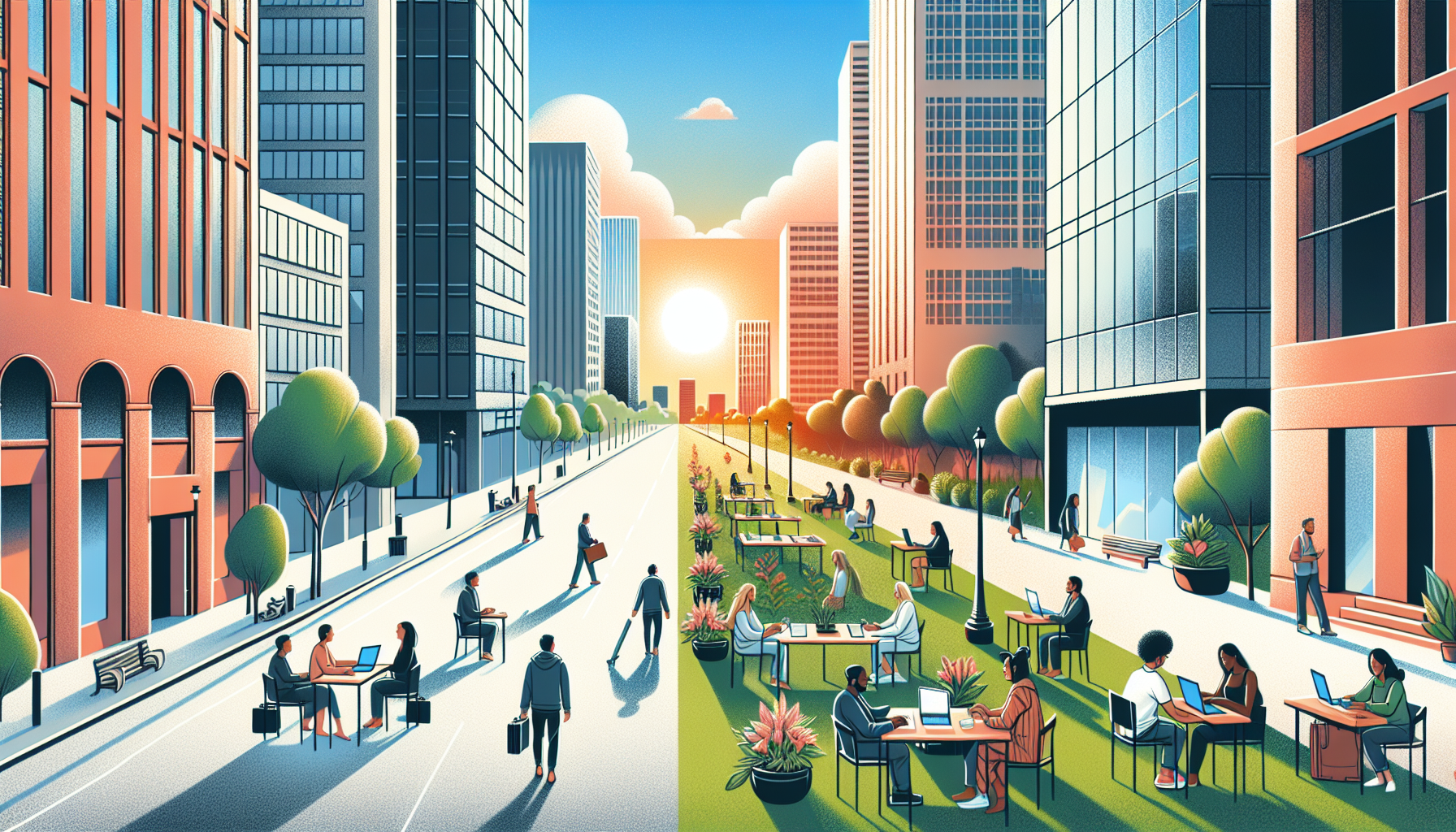The evolution of work habits, particularly the shift toward remote work, has undeniably altered the landscape of urban development. The COVID-19 pandemic catalyzed a movement that was already gaining traction, prompting companies and employees to embrace telecommuting as the new normal. The implications of this change stretch far beyond the confines of individual organizations and have profound effects on urban planning, real estate, and community dynamics.
Rethinking Urban Space
Urban areas have traditionally been designed around business districts, with dense concentrations of office buildings catering to a massive daily inflow of commuters. However, the rise of remote work prompts a significant re-evaluation of this model. Commuting patterns have changed, with fewer workers flooding into city centers daily. This has led urban planners to rethink the distribution of spaces within cities, potentially leading to more mixed-use developments. Such areas combine residential, commercial, and entertainment spaces, reducing the need for long commutes and supporting more vibrant, community-focused neighborhoods.
Transforming Real Estate
The real estate market is experiencing a seismic shift due to remote work. On the commercial side, demand for traditional office spaces has diminished, with companies downsizing their physical footprint or transitioning to flexible co-working spaces that align better with a workforce that is no longer onsite five days a week. This profoundly impacts landlords and investors, who must adapt to these changing demands by repurposing or dividing larger office spaces into more versatile offerings.
There is a growing preference for homes with dedicated office spaces on the residential side. This new criterion reshapes housing markets, particularly in suburban and rural areas where larger homes may offer the additional space that remote workers seek. This trend has contributed to a surge in property values in less densely populated regions as more city dwellers seek environments conducive to living and working remotely.
Declining Demand for Infrastructure
The daily departure to and from city centers places significant pressure on transportation infrastructure. With remote work, the demand for such capacity has slackened. Public transit systems, which rely on the revenue from high ridership, are reconsidering how to maintain viability in the face of declining use. Meanwhile, roadways and highways may not need the same level of investment in expansion and maintenance if the volume of commuter traffic remains reduced.
This shift offers a unique opportunity for cities to redirect funds and efforts from transportation infrastructure to other areas, such as digital infrastructure improvements that support widespread high-speed internet access—critical for an efficient remote workforce.
Impact on Local Economies
The dispersion of the workforce outside of traditional business districts is impacting local economies. Areas that once thrived on the patronage of office workers, such as downtown restaurants, coffee shops, and retail stores, are experiencing reduced footfall. These businesses must adapt by targeting a different clientele, such as residents, or by revising their product and service offerings to suit the new remote work lifestyle.
Conversely, suburban and exurban local businesses may see an uptick in daytime customers as remote workers frequent cafes and shared spaces to escape the isolation of home offices. These shifts could lead to more balanced economic development across urban and suburban areas.
Environmental Considerations
Remote work can also contribute positively to urban sustainability goals. Fewer commuters translate to lower emissions from transportation, which is a significant component of a city’s carbon footprint. Furthermore, decreasing the need for office heating, cooling, and lighting reduces energy consumption, prompting a more environmentally friendly approach to city living and working.
Transitioning to a significant remote workforce allows for a reassessment of green spaces within cities. With potentially less demand for vast parking lots and sprawling office complexes, urban centers could be reimagined to include more parks and recreational areas, thereby enhancing the quality of life for residents.
Conclusion
The impact of remote work on urban development is profound and far-reaching. As more businesses adopt remote or hybrid work models, the effects on how cities are designed, how real estate is utilized, how infrastructure is prioritized, and how local economies are supported will continue to evolve. Urban planners and policymakers must remain agile, ready to innovate and redesign urban landscapes to meet the changing needs of their inhabitants. The resulting cities may emerge as more resilient, livable, and better suited to the changing dynamics of work and life in the 21st century.

